

Josh Nevett
CarExpert's top five mid-size SUV reviews of 2025
7 Hours Ago
Honda's mid-spec CR-V isn't the sweet spot of the range, but the nameplate's core strengths of comfort and space still shine through.
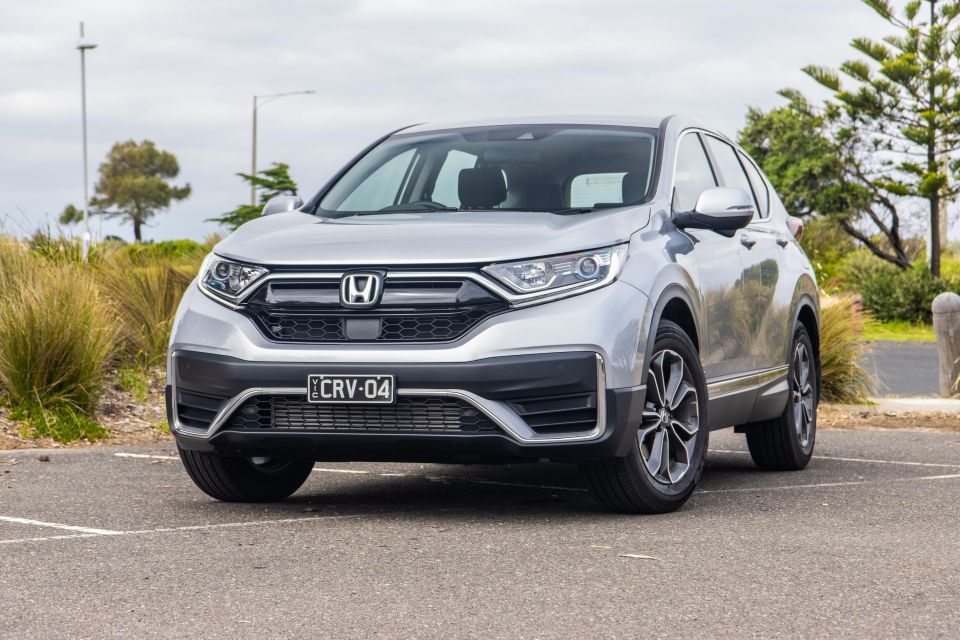
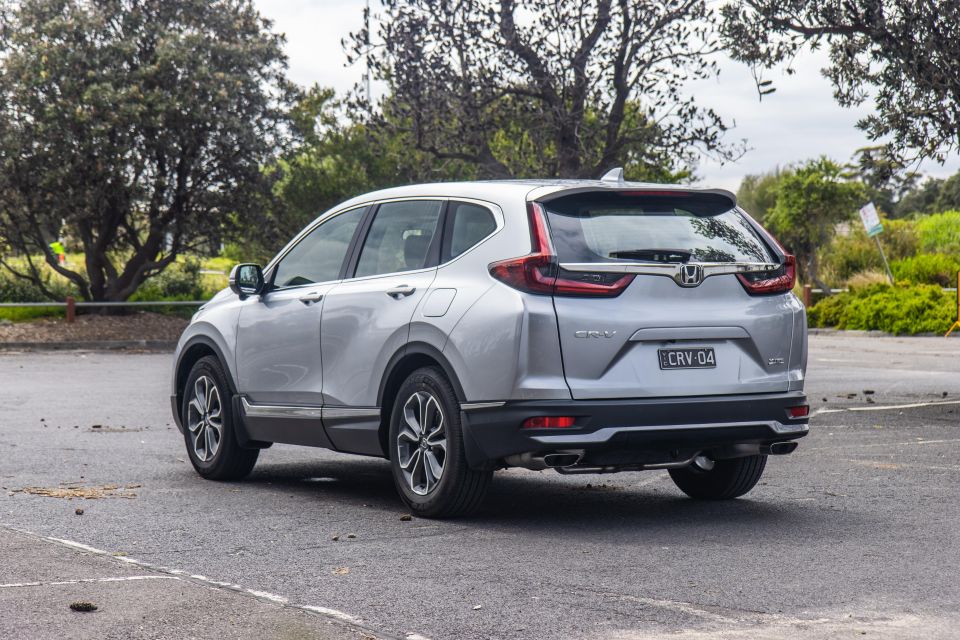

Marketplace Editor
New from
$37,000
excl. on-roads

Marketplace Editor
New from
$37,000
excl. on-roads


Marketplace Editor
New from
$37,000
excl. on-roads

Marketplace Editor
New from
$37,000
excl. on-roads
Quickly see how this car stacks up against its competition. Select any benchmark to see more details.
Where expert car reviews meet expert car buying – CarExpert gives you trusted advice, personalised service and real savings on your next new car.
The Honda CR-V is a special nameplate to me because, well, it was my first car.
Back in 2000 my parents bought a first-generation CR-V Sport which we kept for over 15 years. It was the car I learnt in and spent the bulk of my P-plate days driving until it was traded in for the Kia Sportage they still own today.
A lot has changed since that initial iteration. The toy-like looks and compact dimensions have been swapped out for a longer body, and the once-iconic spare wheel on the tailgate as been relegated to under the boot floor. Production has also shifted from Japan to Thailand.

The CR-V is a very different car these days. It’s not quite the adventure-promising recreational vehicle the original was and more a comfortable, practical family hauler that is better suited to the tastes of today’s buyers.
Honda has also recently moved to an agency business model with fixed drive-away pricing and a reduced dealer network in an effort to rationalise its range and deal directly with the consumer.
On test we have the 2022 Honda CR-V VTi X, pitched as something of a value option priced from just over $41,000 drive-away with a pretty healthy equipment list, and positioned in the middle of the seven-strong line-up.
With key rivals getting bigger and better – think Hyundai Tucson, Kia Sportage, Mitsubishi Outlander and Toyota RAV4 – does the CR-V still have what it takes to be a top pick in Australia’s most competitive segment?
The front-drive CR-V VTi X asks for $41,200 drive-away, with all paint options available at no extra cost – such as the Lunar Silver metallic seen here.
At just over $40,000 drive-away the CR-V is in the thick of the mid-size SUV segment, competing with high-grade Chinese models, mid-spec Korean rivals, and just off the low end of some European ranges.
The range starts in the mid-$30,000 bracket and climbs to over $50,000 drive-away.
2022 Honda CR-V pricing:
All prices are drive-away

Given the medium SUV class is one of the most hotly-contested vehicle segments in Australia, let alone the world, the CR-V has no shortage of rivals.
Key competitors include:
All prices exclude on-road costs unless specified (D/A)
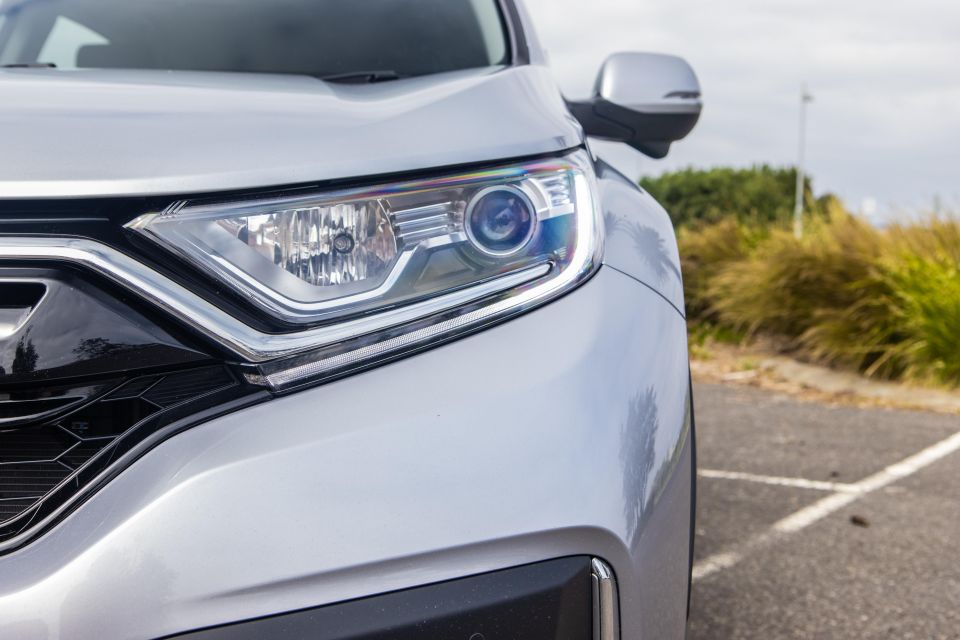
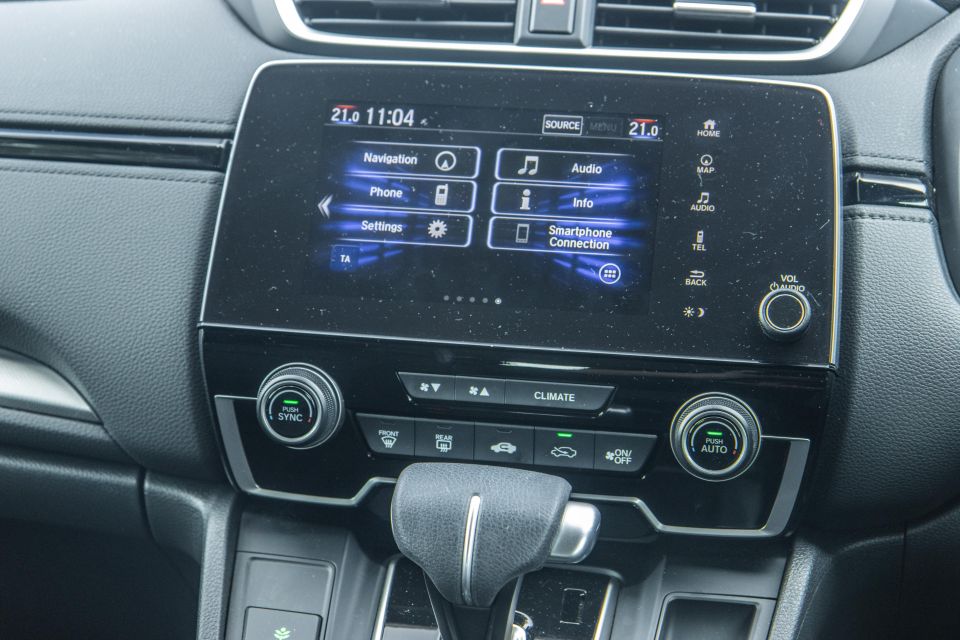
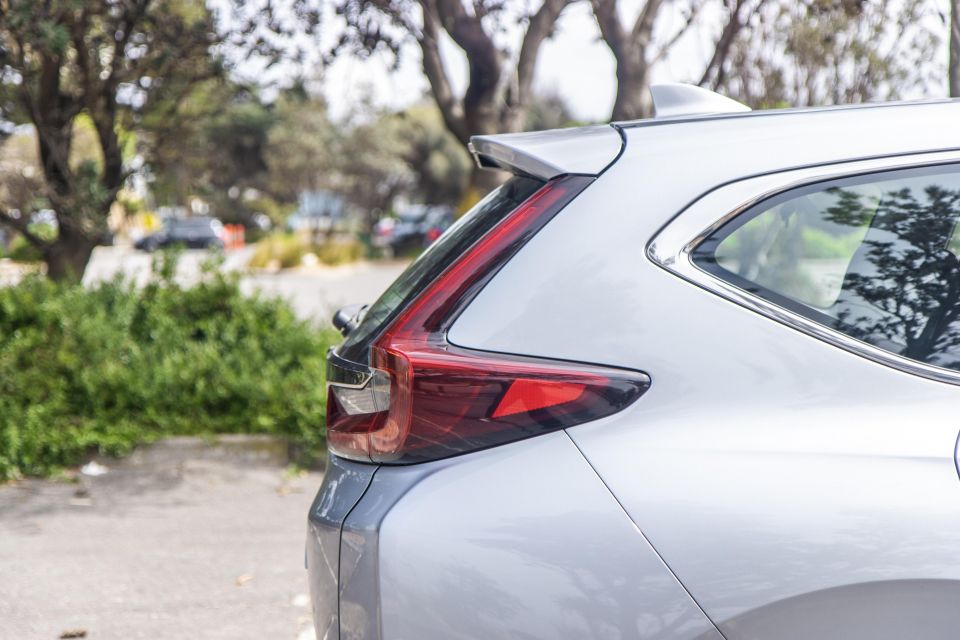
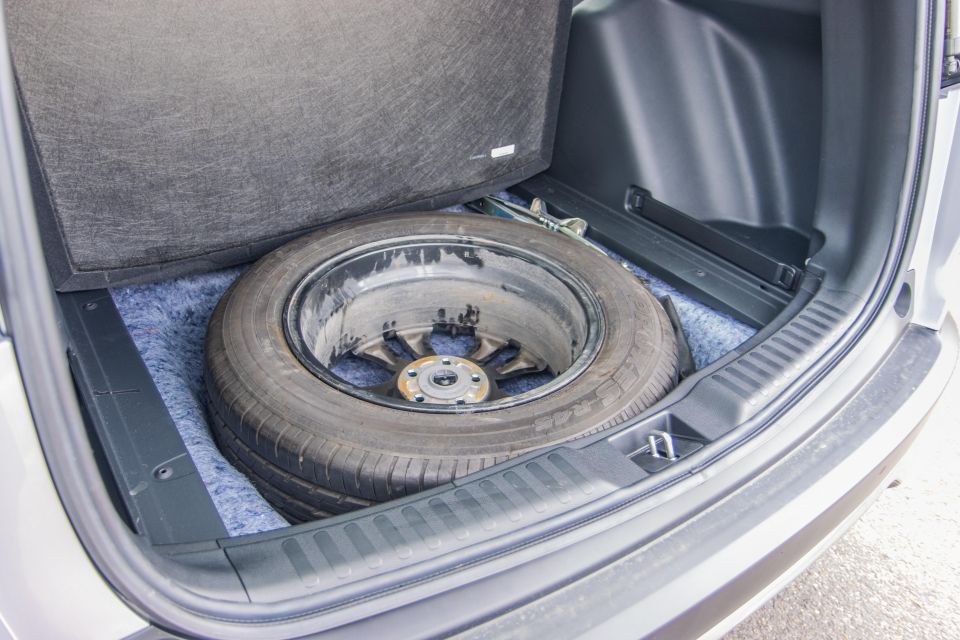
Buy your new car without the stress. It's fast, simple and completely free.

Great service from Travis and team, second time I have used this business would not hesitate to recommend them to anyone
Craig C.
Purchased a Ford Ranger in Sunshine Coast, QLD
CarExpert helped Craig save thousands on his Ford Ranger, now let us save you on your next new car.
Find a dealCR-V VTi X highlights:
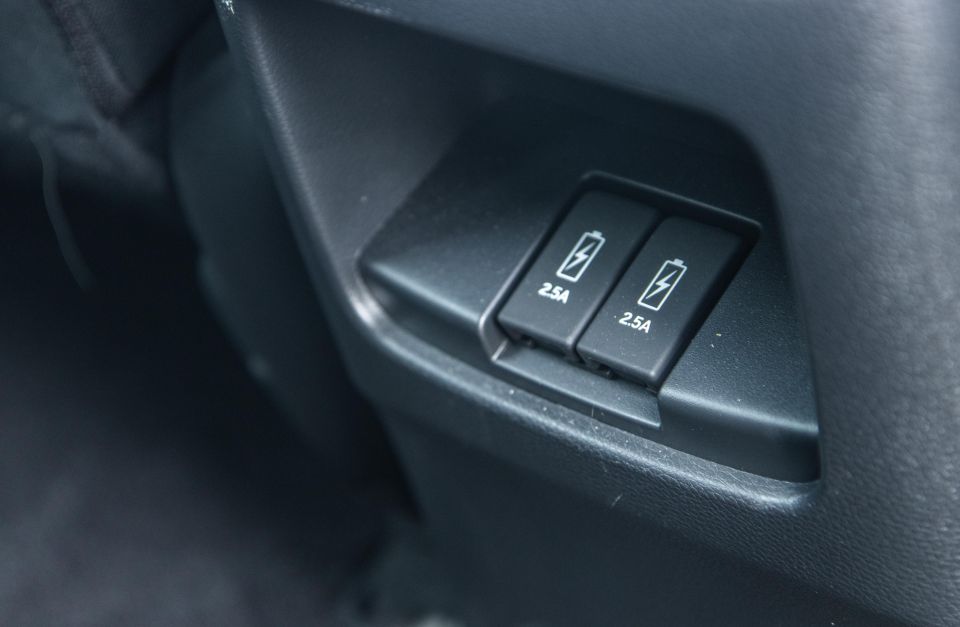
That’s on top of the spec of lower grades, which includes:
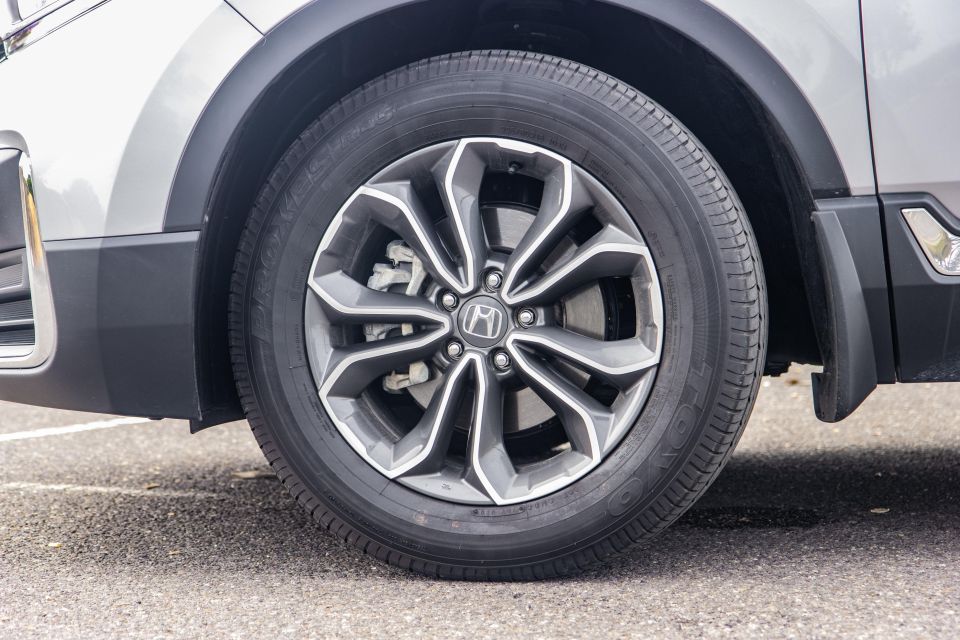
While the spec sheet looks pretty well filled out on paper, there’s a number of items the CR-V VTi X misses out on compared to similarly-priced rivals.
LED headlights, leather seat trim, wireless phone charging, automatic wipers and privacy class are key omissions, as are DAB+ radio, an auto-dimming rear-view mirror, heated side mirrors, auto up/down function for all windows, and a leather-wrapped gearshift.
All of these features are available on higher-end CR-V grades.
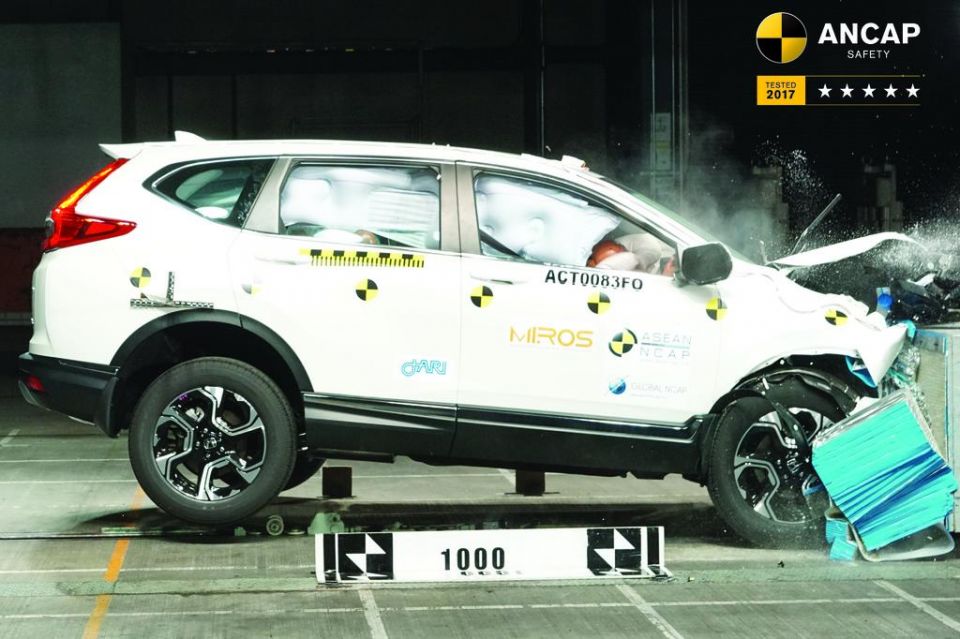
The CR-V has a five-star ANCAP safety rating, on the back of tests conducted on the pre-facelift model in 2017.
Base Vi variants disappointingly miss out on autonomous emergency braking and lane-keep assist, although it is available on the rest of the range as part of the Honda Sensing suite of driver assistance functions.
The Honda Sensing suite also includes adaptive cruise control, as well as lane- and road departure warning. LaneWatch blind-spot monitoring is standard on the VTi X and up.
There are standard front, front-side and curtain airbags, and the curtain airbags extend to the third row in seven-seat models.

Even after a recent facelift, not much has changed inside the CR-V’s cabin since this generation launched in 2017.
As has been the way of the CR-V nameplate in recent years, the interior focuses on simplicity, storage and space – and it continues to deliver on these fronts in spades.
There’s a real feel of airiness in both rows, and the comfortable seats mean the whole family will be happy.
Ahead of the driver is a part-digital instrument cluster, with a 7.0-inch touchscreen sitting on the dashboard like a floating tablet.
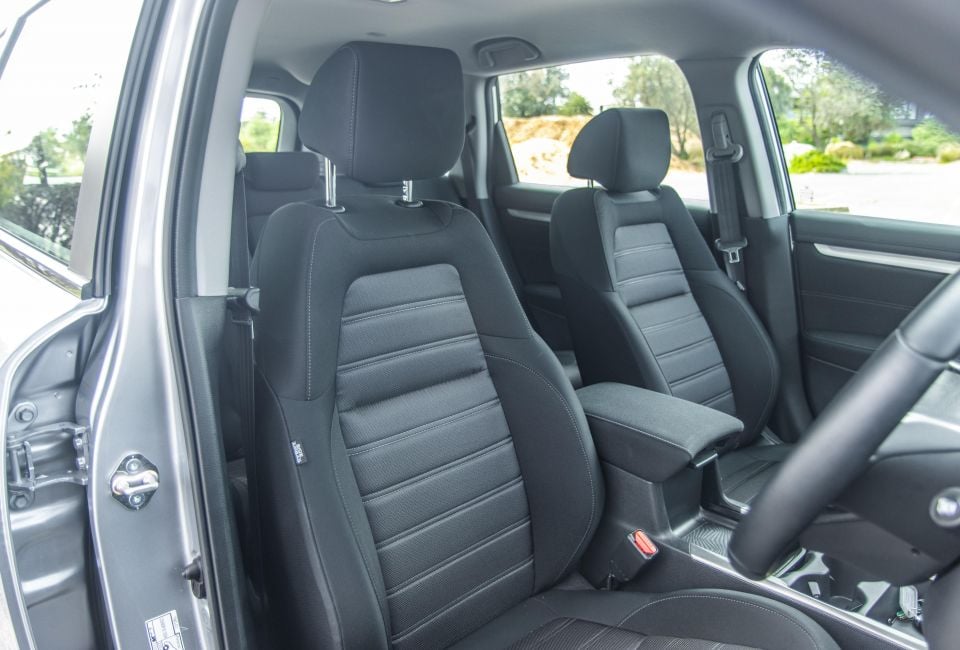

Honda has been falling behind on the tech front for a little while, and the CR-V’s displays are examples of that trend. The graphics on both displays are quite dated and the infotainment, while well-featured on paper, is slow to respond and lacks the user-friendliness of rival systems.
The 7.0-inch central display is on the smaller side of things too, with most rivals moving to 9.0 and 10.25-inch displays or even larger – the Kia Sportage offers a huge 12.3-inch touchscreen in most grades, for example.
Plug in your phone for Apple CarPlay or Android Auto and you’ll bypass the annoyances caused by the embedded software, but it’s a shame a brand once heralded for technological innovation feels so old-hat.
There’s plenty of storage up front for all your bits and bobs, with a phone-shaped shelf in the centre console, massive cupholders, and a deep centre cubby. Decent door bins round out the storage solutions, and there’s a USB charge ports to keep your devices juiced.

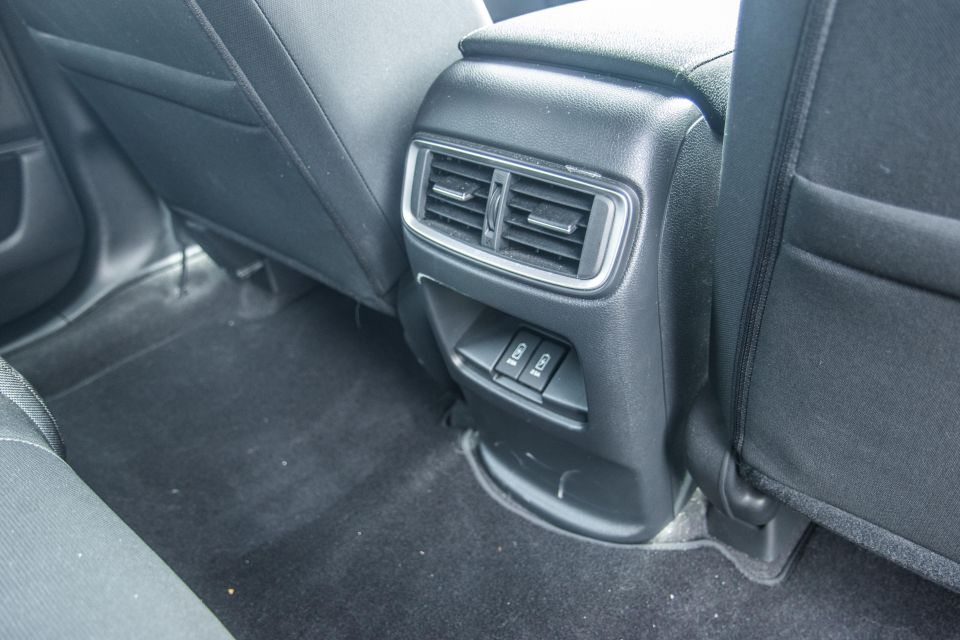
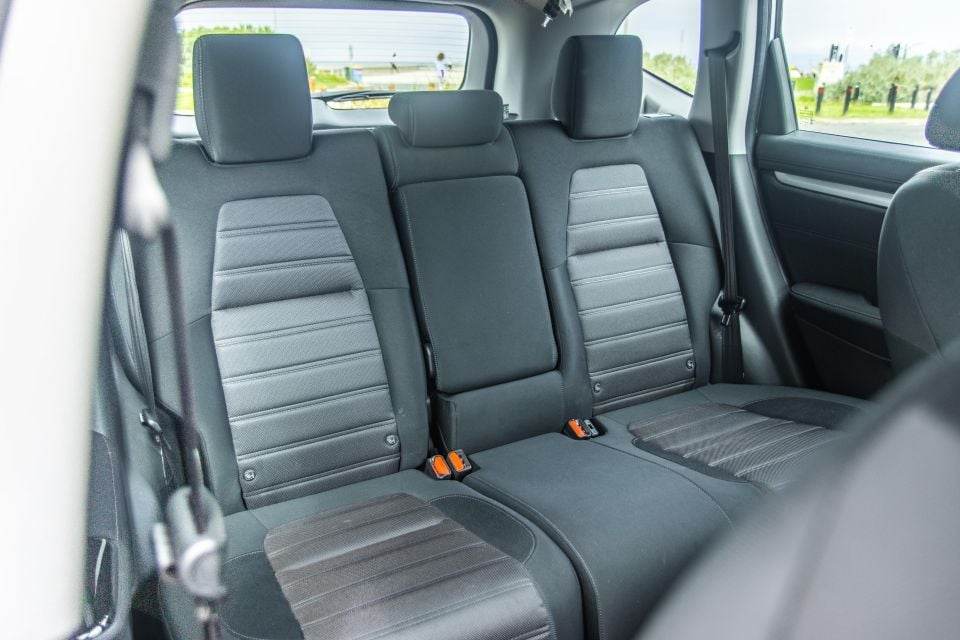
In the second row is arguably where the CR-V shines best.
There’s heaps of space for two adults or leggy teens, and the centre seat is wide and flat enough that getting the centre pew isn’t cause for alarm. The centre seat does have a roof-mounted seatbelt, which feels a bit out-of-date.
Amenities include a fold-down centre arm rest with cupholders, directional air vents, map pockets behind both front seats, and bottle holders in each door.
ISOFIX points also feature on the outboard positions, and there’s top-tether points for all three seating positions.
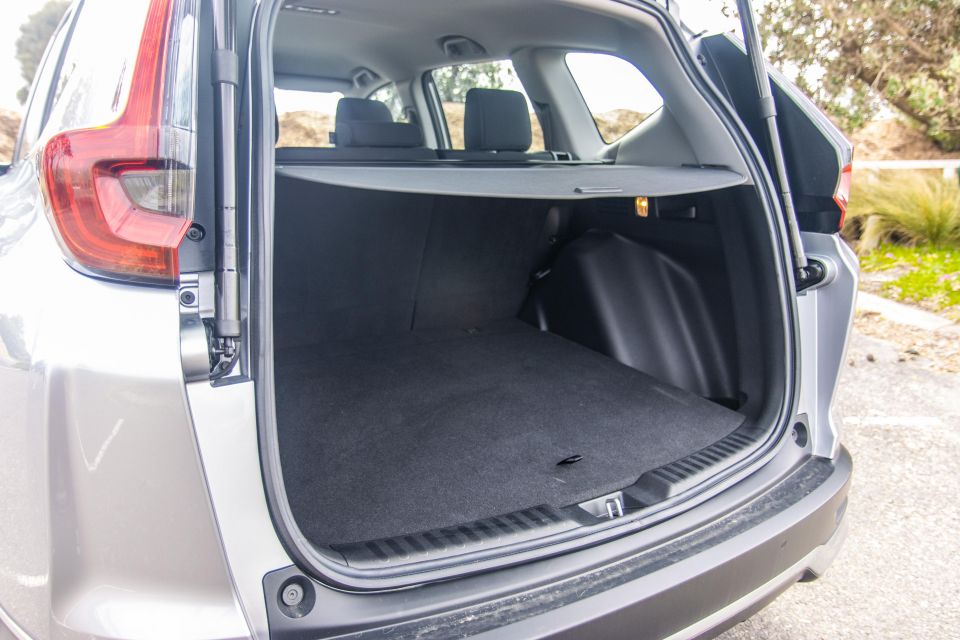
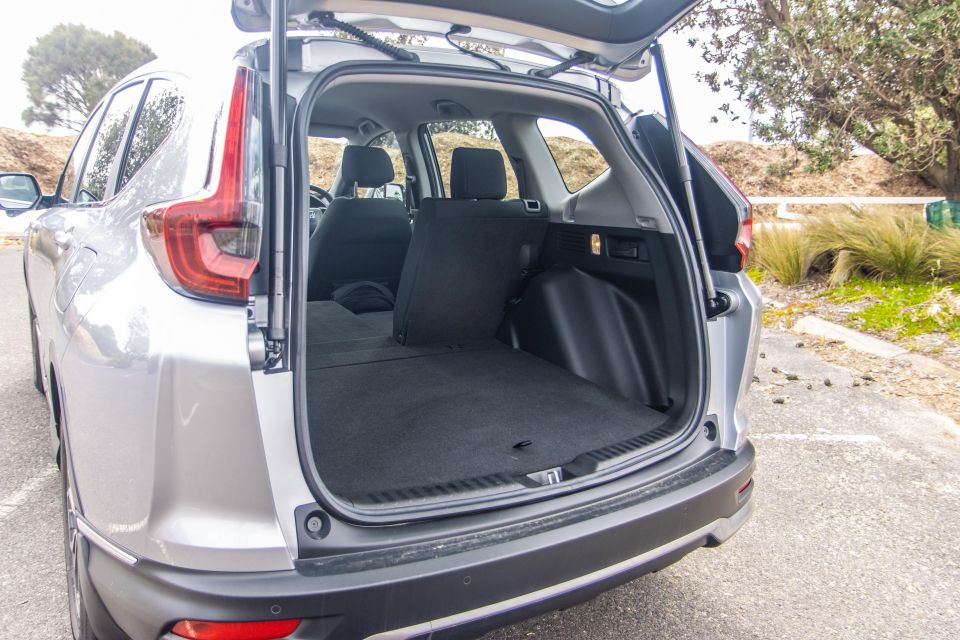
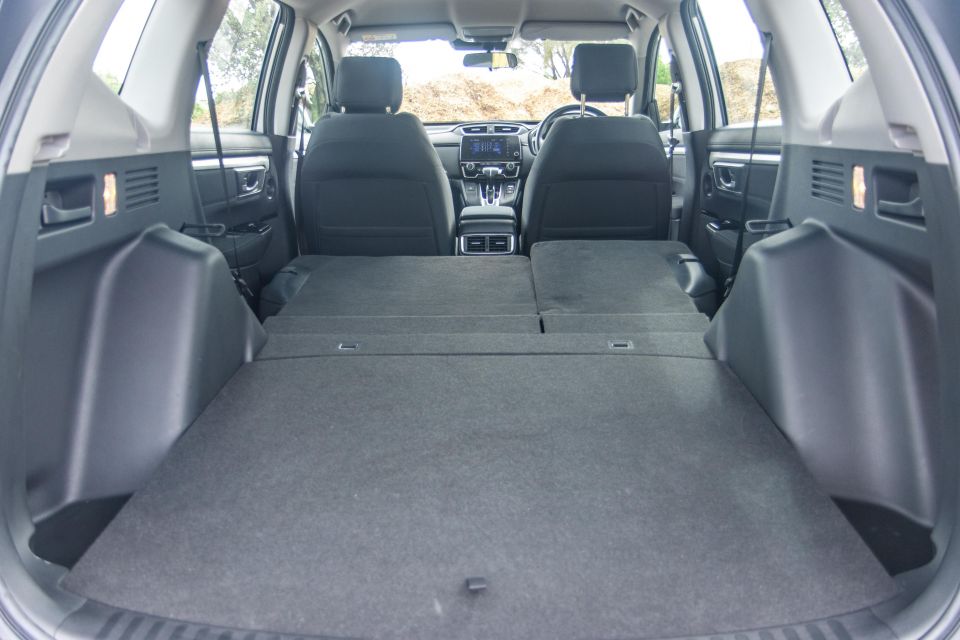
The CR-V continues to offer one of the largest boots in the class, measuring 522L/1084L in five- and two-seat configurations, though in practice the space feels much larger.
A wide, square opening and flat load floor mean the CR-V can swallow any pram and nappy bag you can think of, plus the sporting gear and then some. Fold down the rear seats and it opens up like a small van.
Honda fits a full-size spare wheel under the boot floor, which is increasingly becoming a rarity these days, and there’s remote seat releases in the boot area to drop the rear bench without opening the rear doors.
While the CR-V’s boot remains one of the best in segment, many rivals are catching up and in fact overtaking the Honda in terms of quoted capacity, including the new Hyundai Tucson (539L/1860L) and Kia Sportage (543L/1829L).

All CR-V models barring the base Vi are powered by a 1.5-litre turbocharged four-cylinder petrol engine, with outputs quoted at 140kW (5600rpm) and 240Nm (2000-5000rpm).
In the VTi X, drive is sent to the front wheels exclusively via a CVT automatic. On-demand all-wheel drive is available on the VTi L and VTi LX.
The VTi X, along with the VTi 7 and VTi L7, all claim to use 7.4L/100km on the combined cycle, with the CR-V’s 57-litre tank happy to drink 91 RON regular unleaded.

The current-generation CR-V has long been praised for its keen dynamics and comfortable ride. Not much has changed on that front, though the competition continues to evolve.
I personally have never quite been as enthralled by the CR-V’s drive, but its direct steering, well-balanced chassis and confident handling make it one of the better mid-sized SUVs to drive.
Drive it sedately and the CR-V rewards you with pretty linear and effortless progress and decent overall refinement in terms of insulation from engine, road and wind noise – though the tyres can make a bit of noise on coarse-chip roads, as we found on Melbourne’s work-in-progress West Gate Freeway.
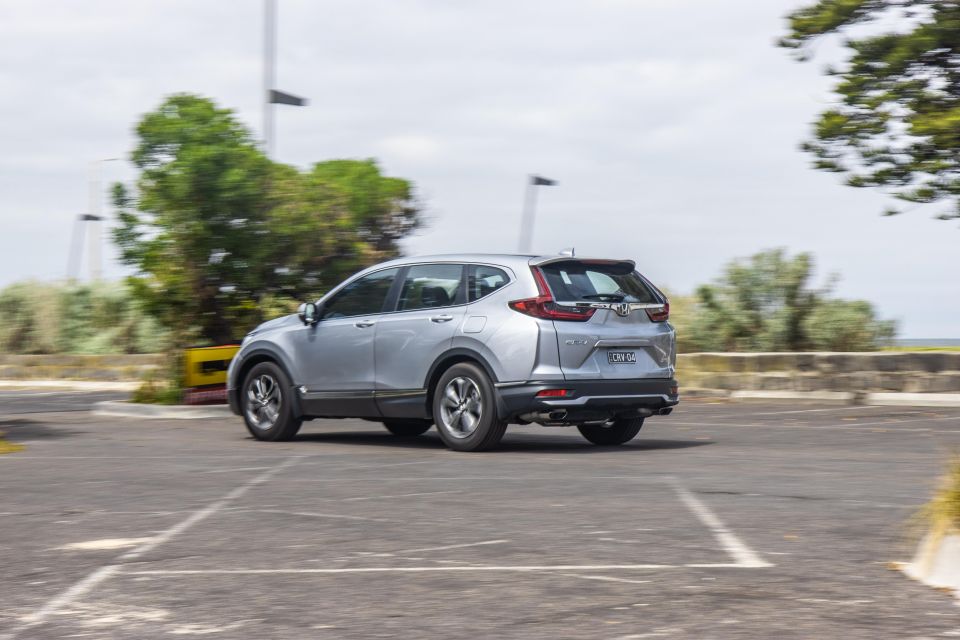
Where expert car reviews meet expert car buying – CarExpert gives you trusted advice, personalised service and real savings on your next new car.
The well-sorted suspension tune also means it irons out the lumps and bumps of inner-city roads with finesse.
With that said, the overall experience is dulled to the point of feeling uninspiring due to the calibration of the CVT automatic.
Unlike a number of rivals with programmed ‘steps’ in their continuously-variable transmission to reduce the typical droning characteristic and offer an acceleration experience more akin to a conventional automatic, the CR-V tends to hold revs which sends a droney, slurry engine note through the cabin.
It just doesn’t sound very attractive, and takes away from what is a very capable setup when you consider the ride and handling tune. Plus, that 140kW/240Nm turbo petrol engine offers decent grunt for the class.
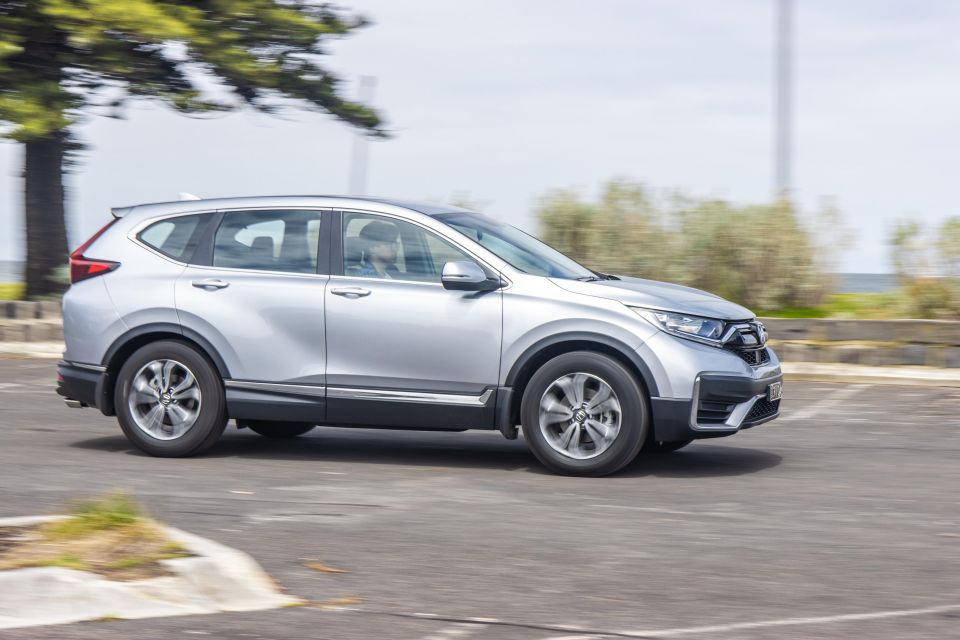
You never really feel the lack of AWD in normal driving, though if you plant your right foot hard enough you’ll light up the front tyres and be rewarded with some torque steer off the line. Otherwise, the CR-V feels planted and stable across most of the conditions you’ll encounter day-to-day.
Another sore point is the Honda Sensing assistance suite, which in my experience wasn’t as well-calibrated or intuitive as systems you get in Korean and European rivals.
The adaptive cruise control system works fine with the active lane centring when there’s few cars on the road, but it jabs the brakes as soon as a vehicle is sensed ahead, even if it’s well beyond the set following distance. Further, we found the CR-V would be inconsistent with the set speed when there was a combination of traffic and turns on the freeway.
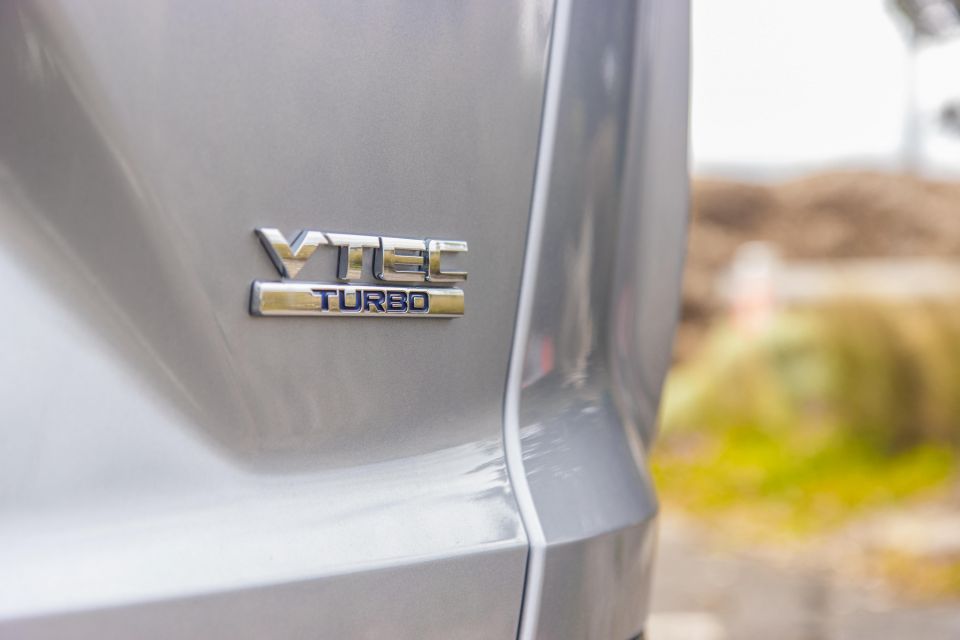
I’m also not a fan of the dated LaneWatch camera-based blind-spot monitoring system. In theory it should be great, but in practice it leaves a little to be desired.
The camera feed itself is grainy and it’s only for the passenger side of the vehicle, meaning there’s no alert or assistance on the driver’s side. Hyundai and Kia’s Blind Spot View Monitor, which adds camera feeds on both sides of the vehicle to supplement the existing blind-spot alert/assist systems, is a far better execution of this idea.
It’s also annoying that the camera cuts out voice prompts when you’re trying to use Siri or Google Assistance to send messages or perform functions while you’re on the move.
Honda’s auto high-beam function is also eager to turn on in real-world use – something we’ve found with the Civic as well. In suburban streets with decent illumination the system (which defaults to on) is keen to get involved, and on numerous occasions stayed on when an oncoming vehicle was in its path.
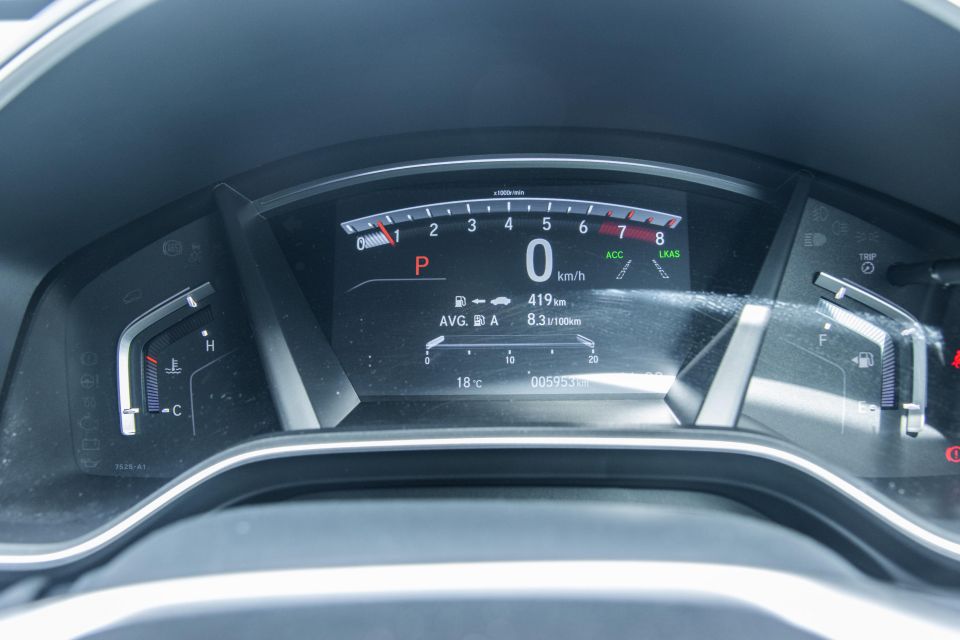
The CR-V is backed by a five-year, unlimited-kilometre warranty.
Servicing takes place every 12 months or 10,000km – whichever comes first.
From July 1, 2021, the first five services are capped at $125. That means the CR-V costs just $625 to service over the first five years, down from $1560 previously.
In terms of real-world fuel consumption we saw the trip computer stay in the mid eights during a week of mixed driving. The lack of idle start/stop tech sees the CR-V’s indicated consumption figure jump quickly in the city.

They say ‘don’t diss the legends’, but the Honda CR-V is a famous nameplate in need of a few tweaks.
Particularly in VTi X trim, which is priced at over $40,000 on the road, it lacks some of the features and polish you would expect at the price point.
It doesn’t help that a raft of rivals have been updated or overhauled recently, and there are still more to come. That makes it even harder to put the CR-V at the top of the shortlist, given the competition now is so fierce.
The new Sportage and Tucson offer quite a lot space and tech for similar money, as well as more upmarket designs inside and out. The new Mitsubishi Outlander is also a great alternative for those wanting something a little larger.
Honda’s staple crossover is still a good thing, though. Opt for the cheaper VTi ($38,300 D/A) or dearer VTi L ($45,500 D/A) and you get a more balanced spec sheet for your respective spend, as well as one of the cheapest servicing plans there is at the moment.
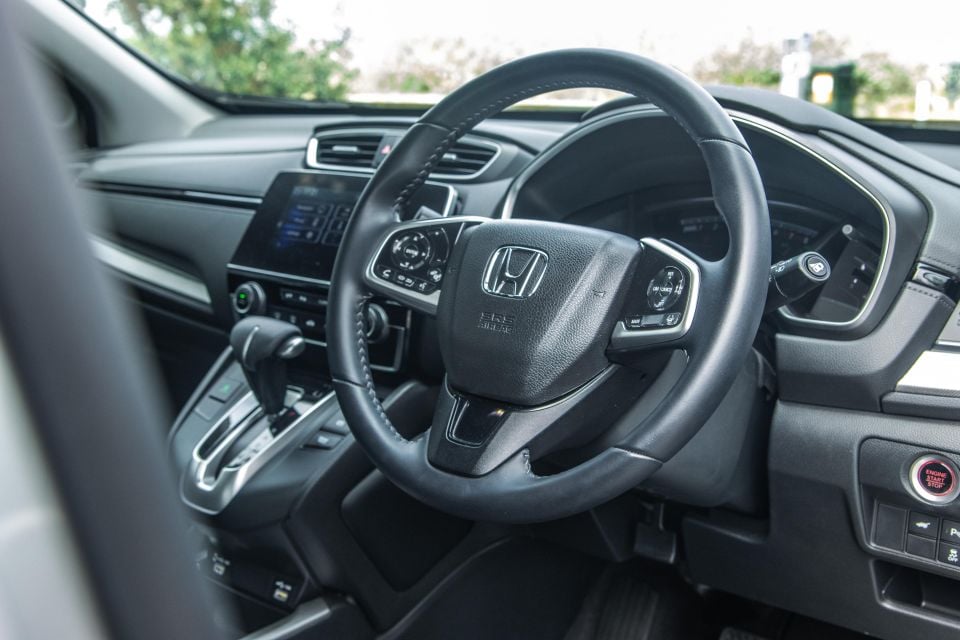
Click the images for the full gallery
MORE: Everything Honda CR-V
Where expert car reviews meet expert car buying – CarExpert gives you trusted advice, personalised service and real savings on your next new car.
James Wong is an automotive journalist and former PR consultant, recognised among Australia’s most prolific motoring writers.


Josh Nevett
7 Hours Ago
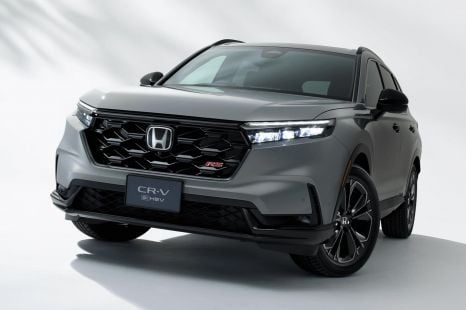

James Wong
2 Days Ago


Derek Fung
2 Days Ago


CarExpert.com.au
5 Days Ago
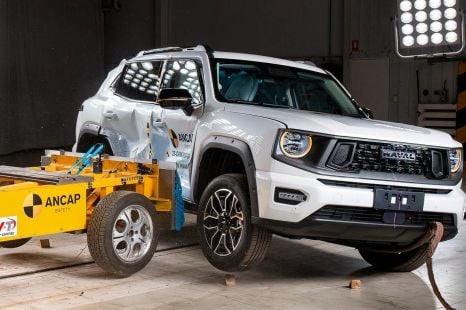

James Wong
5 Days Ago
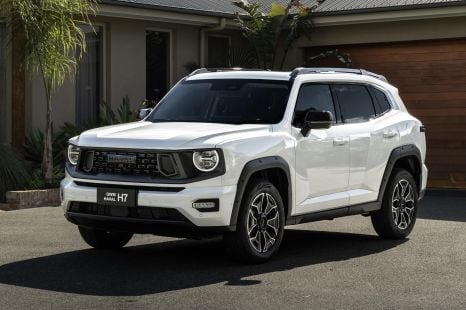

William Stopford
5 Days Ago